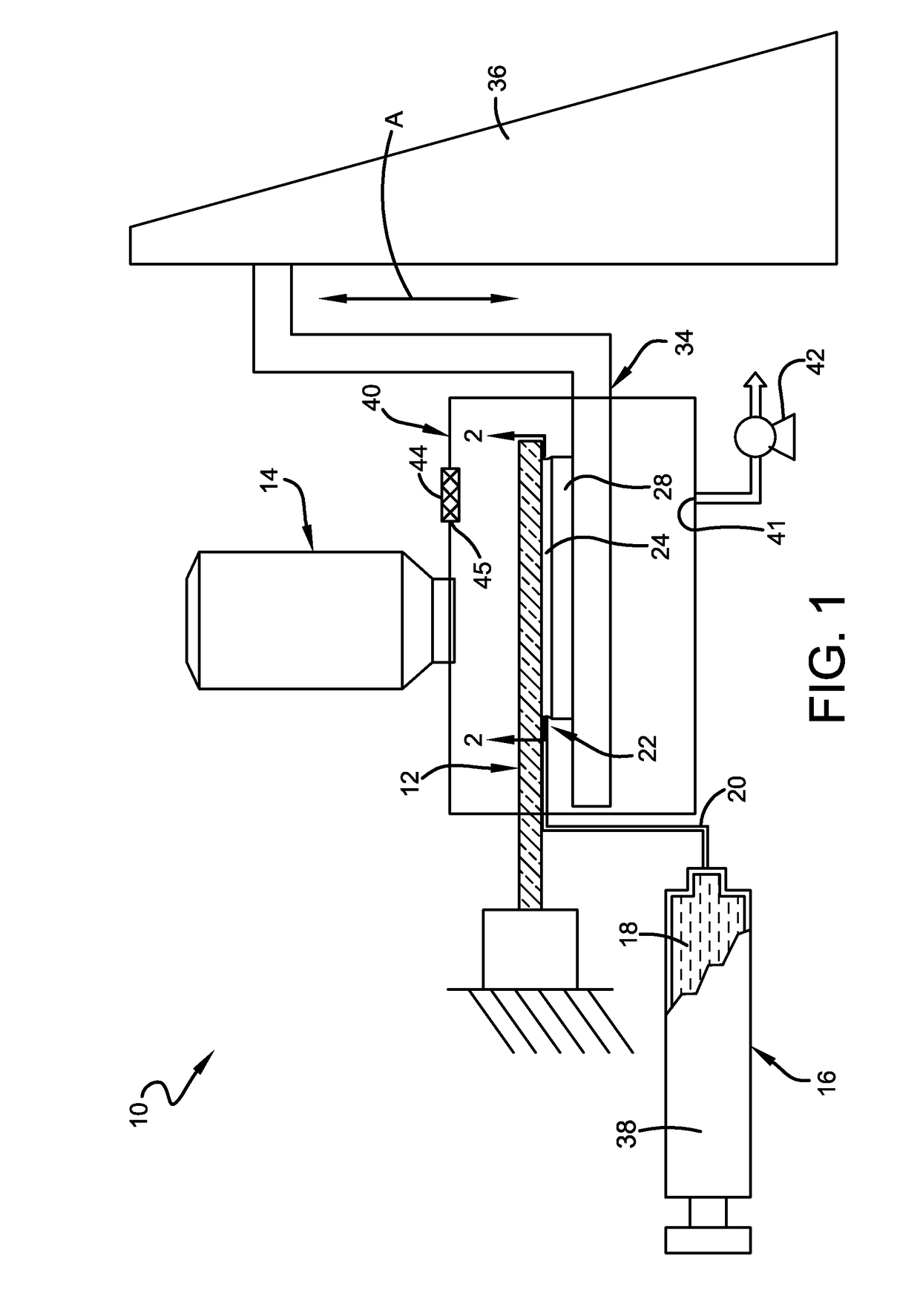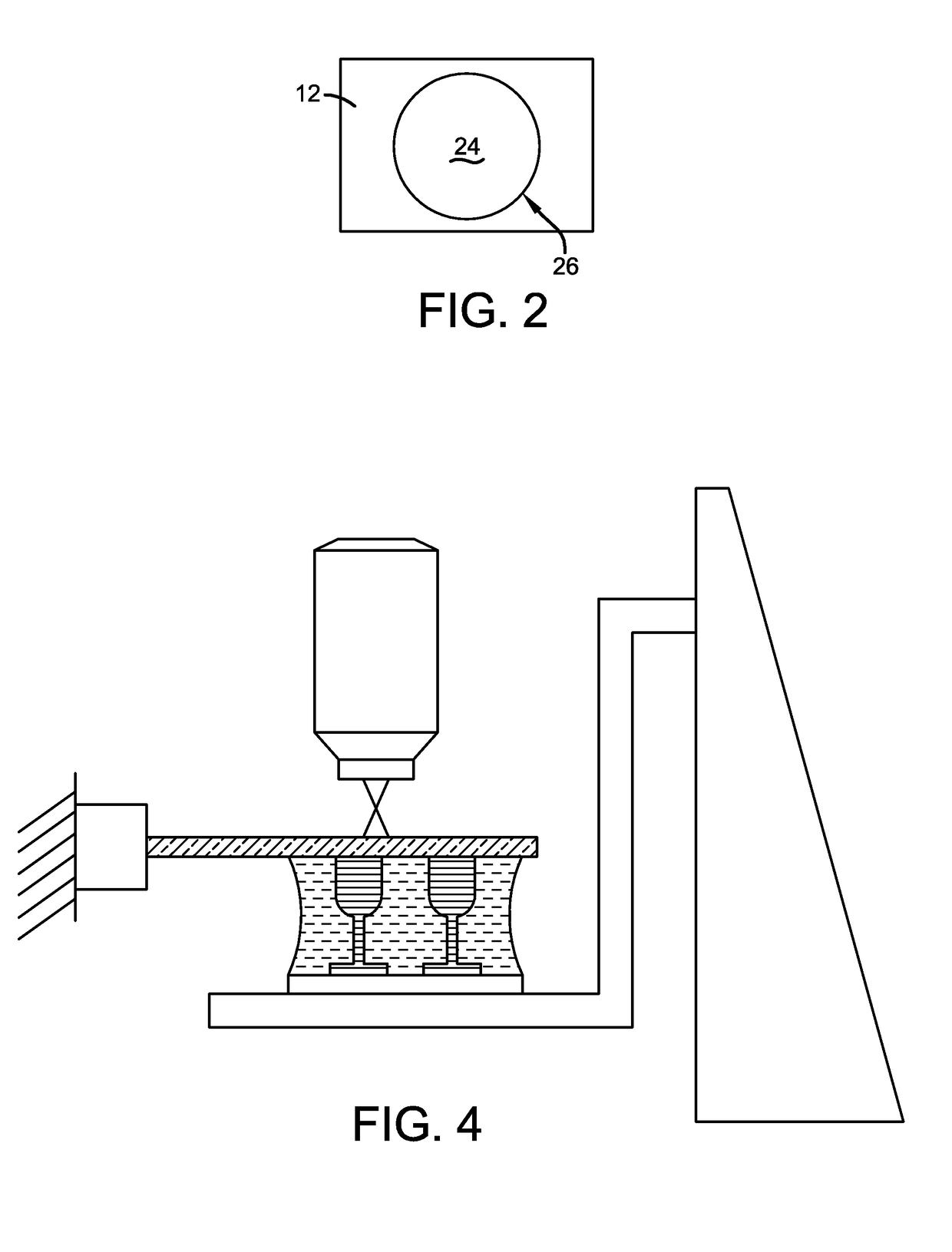Additive printing apparatus and method employing liquid bridge
a printing apparatus and liquid bridge technology, applied in the field of additive printing apparatus and methods, can solve the problems of limited sl vat system and limited production structure of sl techniques
- Summary
- Abstract
- Description
- Claims
- Application Information
AI Technical Summary
Benefits of technology
Problems solved by technology
Method used
Image
Examples
Embodiment Construction
[0045]Referring now to FIG. 1, an additive printing apparatus in accordance with this invention is shown and designated by the numeral 10. The additive printing apparatus 10 includes a light transmissive substrate 12 and a light source 14 adapted to direct light through the light transmissive substrate 12. A photopolymerizable material source 16 supplies a photopolymerizable material 18 for delivery along a fluid path 20 to a delivery position 22 proximate the light transmissive substrate 12. The photopolymerizable material 18 forms a liquid bridge 24 (also known as a capillary bridge or liquid capillary bridge) with the light transmissive substrate 12. As seen in the cross section of FIG. 2, the liquid bridge 24 defines an area of contact 26 with the light transmissive substrate 12. With this minimal structure, additive printing can be achieved by transmitting light through the light transmissive substrate 12 to initiate polymerization of at least a portion of the polymerizable mat...
PUM
| Property | Measurement | Unit |
|---|---|---|
| viscosity | aaaaa | aaaaa |
| length | aaaaa | aaaaa |
| height | aaaaa | aaaaa |
Abstract
Description
Claims
Application Information
 Login to View More
Login to View More - R&D
- Intellectual Property
- Life Sciences
- Materials
- Tech Scout
- Unparalleled Data Quality
- Higher Quality Content
- 60% Fewer Hallucinations
Browse by: Latest US Patents, China's latest patents, Technical Efficacy Thesaurus, Application Domain, Technology Topic, Popular Technical Reports.
© 2025 PatSnap. All rights reserved.Legal|Privacy policy|Modern Slavery Act Transparency Statement|Sitemap|About US| Contact US: help@patsnap.com



